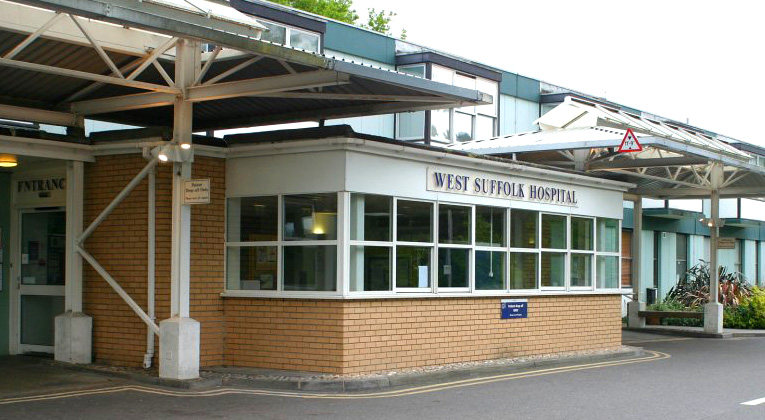AN NHS hospital has commissioned a report into the risk of corporate mans-laughter charges should a fatal roof collapse occur, leaked documents exposed yesterday.
West Suffolk Hospital is spending tens of millions of pounds making dangerous reinforced concrete planks in its main building safe.
And Hinchingbrooke Hospital, which is of similar design, has set a weight limit on patients at two of its theatres.
NHS England claimed the affected trusts are maintaining safe services.
The problems relate to the use of reinforced autoclaved aerated concrete (RAAC) planks that have deteriorated or have structural weaknesses.
Between the 1960s and 1980s they were used in roofs, floors and walls of NHS buildings and schools and had an expected lifespan of 30 years.
The West Suffolk Hospital, in Bury St Edmunds, currently has 27 metal supports under the planks, while the Queen Elizabeth Hospital in King’s Lynn in Norfolk has more than 200 – a temporary measure ahead of more comprehensive safety works.
Hinchingbrooke, in Huntingdon, Cambridgeshire, is closing two operating theatres to heavier patients until March while structural surveys are undertaken.
Published in June, the Annual Plan of the North West Anglia NHS Foundation Trust, which runs Hinchingbrooke, said: ‘The RAAC panelling … affects the load-bearing of the floor, restricting the use of some theatres to patients under 120kg (19 stones).’
The plan stated that 1,700 operations had been affected with patients transferred to Peterborough City Hospital and waiting lists shared across the local health system.
At West Suffolk Hospital, the entire roof structure is also being fitted with measures to catch any failing planks, alongside an experimental scheme to prevent further deterioration inside the wall panels.
The planks are also at risk of failure due to the reinforced metal bars inside them not aligning with supporting elements, and separate work is under way to correct this.
Patients are being moved to other parts of the site as safety works are carried out.
John Corrie from Bury St Edmunds was due to have a prostate operation in July, but it was postponed.
He said he was told ‘it had to be cancelled because of a problem with the structure of the operating theatres.
‘I don’t think important public buildings like this should be allowed to get into this state. This is pretty upsetting for a lot of people,’ he said.
Tens of millions of pounds is being spent on a huge latticework structure under the roof of West Suffolk Hospital to catch ageing concrete planks if they fail.
Documents leaked to the BBC reveal the depth of concern at the West Suffolk NHS Foundation Trust.
These include an initial risk assessment, which states the chances of a plank collapse is ‘almost certain’ and could have ‘catastrophic’ consequences if mitigation measures are not in place.
There is an emergency plan in the event of a ‘significant hospital structural failure’ in eastern England.
Operation Rapture would see automatic authorisation to divert ambulances to other hospitals and invoke what is called the Mass Casualty Plan.
The leaked documents describe how, in 2020, hospital trusts participated in Exercise Hodges that simulated a scenario where part of a hospital collapsed due to RAAC plank failure.
Other hospitals facing similar problems include Airedale in West Yorkshire, Frimley Park in Surrey and Leighton in Cheshire.
Documents also reveal how the West Suffolk NHS Foundation Trust hired a law firm to produce a report into ‘corporate manslaughter’ risks arising from a sudden collapse.
